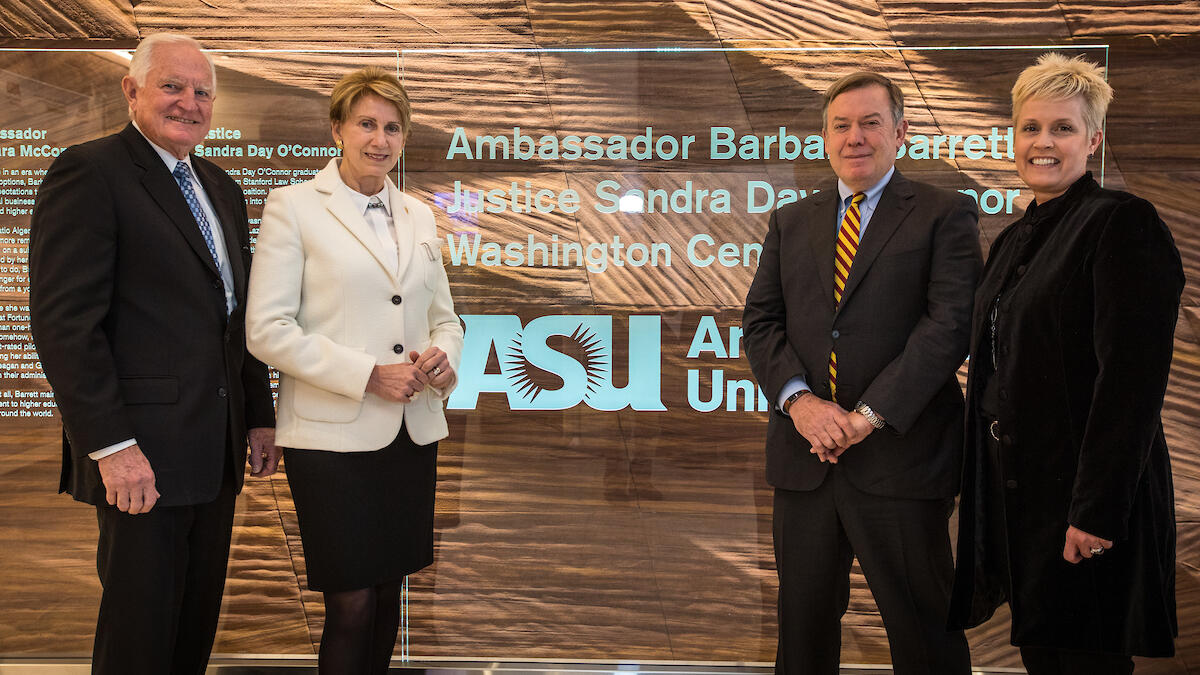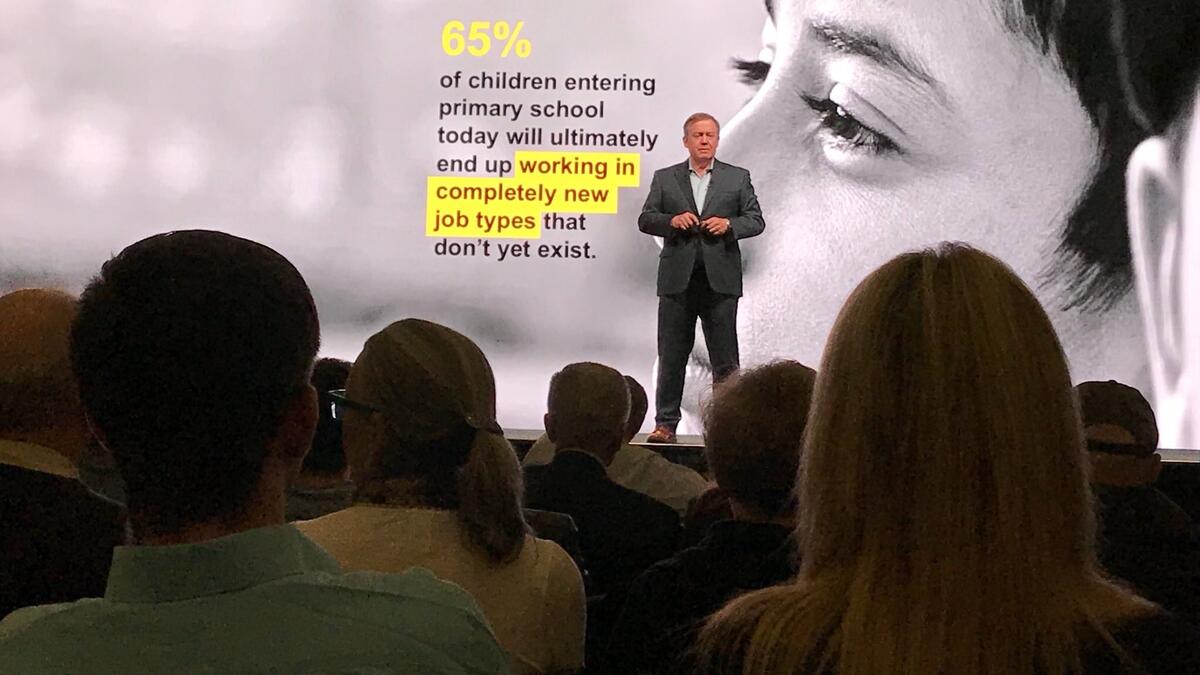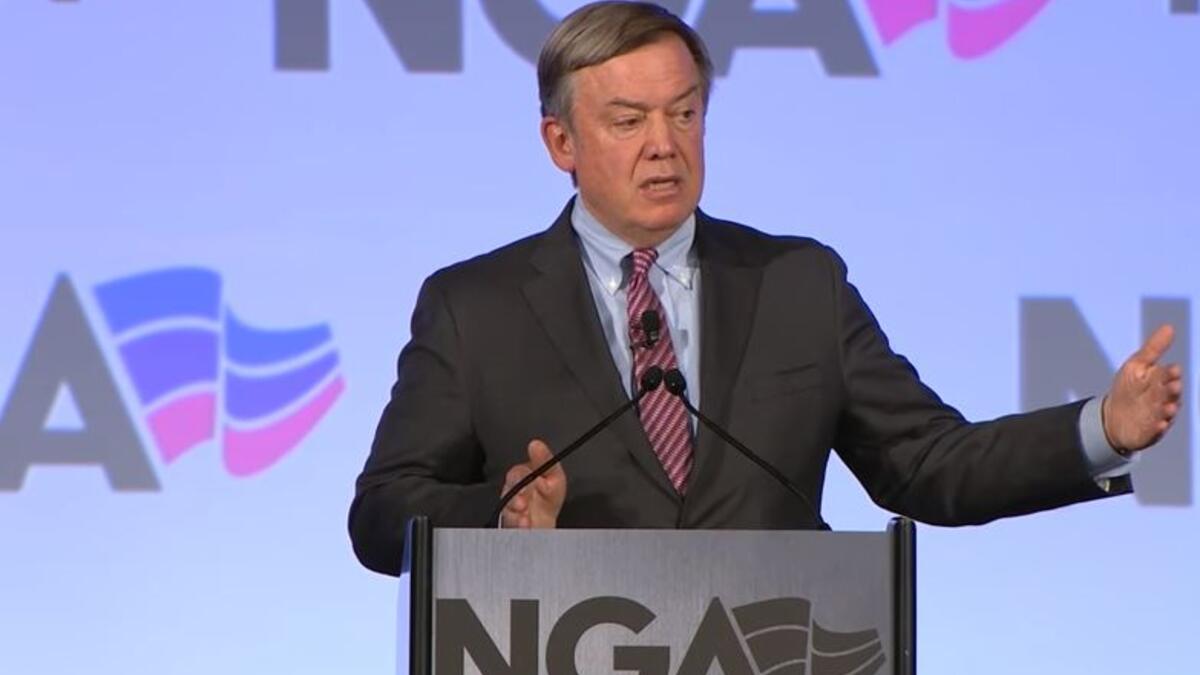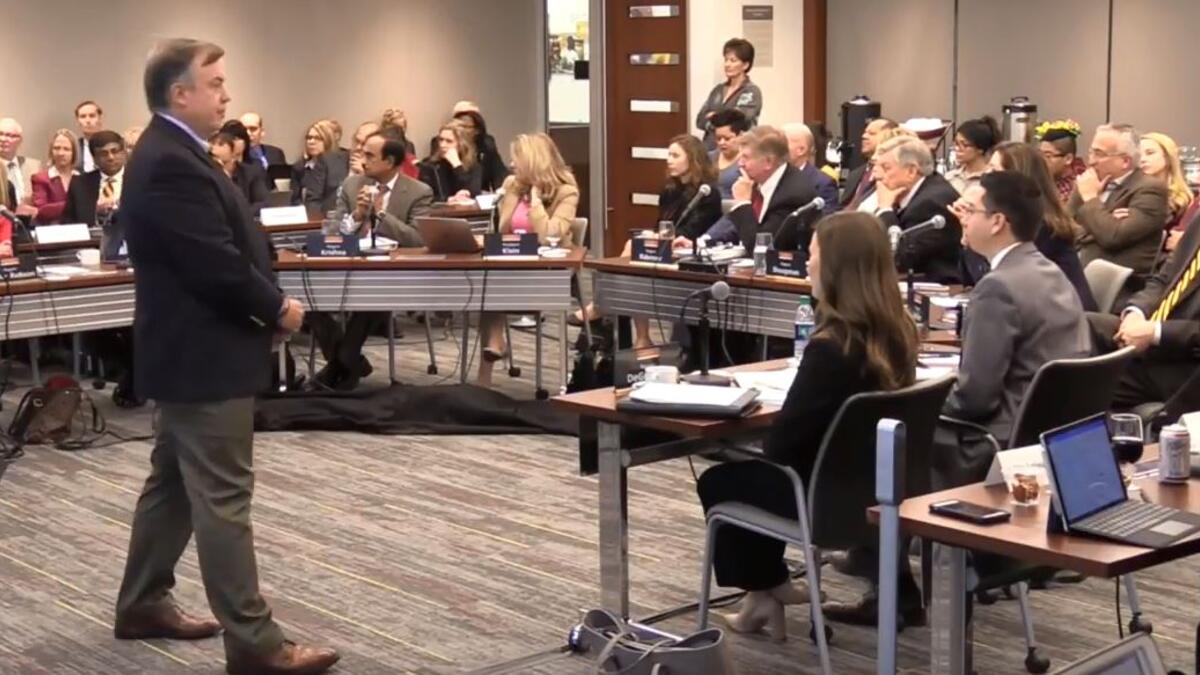
Updates from the President
Updates from President Crow: March 16, 2018
- Barrett & O'Connor Washington Center opens doors in nation's capital
- Preparing for the velocity of change through universal learning
- To National Governors Association: We must increase access, attainment
- A detailed look inside ASU's strategic plan and progress

Welcoming Craig Barrett and Ambassador Barbara Barrett with ASU Foundation CEO Gretchen Buhlig by the commemorative namesake display in the Barrett & O'Connor Washington Center. (Photo credit: Charlie Leight)
Barrett & O'Connor Washington Center opens doors in the nation's capital
Last week we celebrated the official opening of the Ambassador Barbara Barrett & Justice Sandra Day O'Connor Washington Center at ASU, a new home for learning programs in DC, like those established by the Walter Cronkite School of Journalism and Mass Communication, Sandra Day O'Connor College of Law, The McCain Institute for International Leadership and others, and an energetic hub where ASU can work with thought-leaders, decision-makers and diverse partners to advance solutions to national and global issues. Located blocks from the White House, the center hosted a series of special events highlighting the work of ASU's schools and colleges on timely topics. We were also privileged to welcome members of the Barrett and O'Connor families to the center to honor its groundbreaking namesakes.
During the week, I joined Tekedra Mawakana, Waymo's global head of policy, to explore the impact of autonomous vehicles on city design. The School of Civic and Economic Thought Leadership, Ira A. Fulton Schools of Engineering, School for the Future of Innovation in Society, School of Public Service and Community Development, and the Global Sport Institute among others are convening panels to examine issues ranging from free speech to law enforcement, military conflict to journalism, athletics to design, and much more. ASU is excited to begin this new chapter in its growth and service, and I invite you to visit the link below to learn more about our work, the center and its kick-off.

Presenting the challenge facing higher education in preparing future students. (Photo Credit: Julie Euber)
Preparing for the velocity of change through universal learning
March 1 marked the return of my annual Community Conversation, an event dedicated to addressing a broad topic or question of relevance to Arizona State University's work and success. Previous talks explored the real meaning of innovation and the value of a college degree. This year's presentation, hosted in our Student Pavilion and titled "Velocity of Change," examined the speed of knowledge growth and ASU's evolution of a model capable of producing meaningful outcomes. It also delved into how that model will need to be augmented to meet the needs and expectations of future generations of students. The teaching and learning methods that are working well in 2018 will need additional design and technological modifications to meet the rapid, complex learning needs of lifelong learners in 2048, which is why ASU is already advancing a range of forward-looking tools and strategies designed to pioneer the future of universal learning.
I invite you to take a look, consider how these efforts relate to your discipline, industry and interests, and let me know how else we should be working together to help ASU be the best possible resource for lifelong learners in the decades ahead.

Addressing the National Governors Association. (Photo Credit: CSPAN)
To National Governors Association: We must increase access and attainment
I also had the recent privilege of addressing the National Governors Association during its winter meeting in Washington, D.C. In a session titled, "The Future of Innovation in Higher Education," I asked state leaders, as arbiters of the future, to consider the rapidly changing needs and expectations of America's students and its workforce, and how our nation's higher education models must evolve to meet those changes. I also stressed that unless we enable 60% of students to successfully earn some form of postsecondary certificate, our nation will not have a sufficiently skilled workforce capable of adapting to the pervasive, high-speed technological evolution ahead.
The continued progression of our democracy is inextricably tied to making higher education more accessible and affordable for all who want to learn. Underscoring this need, I was joined in conversation by Susana Mojica, a first-generation ASU graduate via the Starbucks College Achievement Plan. Susana shared her path to earning a degree and the dramatic impact her education has made in her life. We need to work collectively to make success like hers the standard, not the exception.

Discussing investment in ASU and the impact on degree production and research growth with the Arizona Board of Regents.
A detailed look inside ASU's strategic plan and progress
Summarizing the performances of a university as large and prolific as ASU is not easy, but each year I present the Arizona Board of Regentswith an update of our progress. This year's operational and financial review took place on February 9 on the Tempe campus, and outlined ASU's transition from underperforming and performing public agency models to its current public enterprise model, the outcomes of which include moderate cost and high financial aid for our students, an improved budget for consistent institutional growth and quality, significantly increased student outcomes and diversity, and impressive growth in funding for knowledge generation.
I also revisited ASU's ABOR assignments to grow enrollment, production of overall and high demand degrees, and our research productivity to meet state need, and discussed how we are working efficiently to achieve these goals despite minimal state investment. This report is critical because it makes clear how we are living up to our charter, the value we provide to the people of Arizona, and the actions we are taking now to be of greater service in the future.